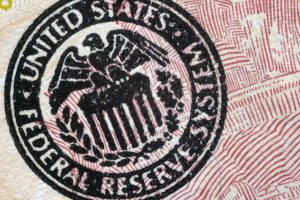With inflation still going strong in the United States, the Federal Reserve has been raising its benchmark interest rate in order to cool down the economy. Last week’s rate hike of 75 basis points was the largest in decades, and more are expected. Because of the role the United States and the dollar play in the global financial system, this monetary tightening has impacted the entire world.
We have seen stocks plummet. We have seen cryptocurrencies collapse. We are seeing mortgage rates rise. And we are seeing capital outflows in emerging markets, with many currencies losing value against the dollar.
The good news is we have known these rate hikes in the U.S. were coming and policymakers around the world, especially central bankers, have had plenty of time to prepare. Moreover, many of the things we are seeing such as higher mortgage rates, right-sizing of over-valued stocks and the implosion of useless Ponzi schemes like crypto are, in fact, a good thing in the long-run even if it causes some people a lot of pain right now.
For other things, like the currency volatility that many Southeast Asian countries are experiencing as the Fed raises rates, these are predictable phenomena and we could see them coming from a long ways off. In fact, many central banks in the region did see this coming and have taken steps to prepare.
In broad strokes, here is what I think is happening. As the Fed raises rates, yields on long-term Treasury bonds start going up. Because U.S. Treasury bonds are (rightly or wrongly) considered among the safest assets in the world, as yields go up investors tend to shift out of assets that are perceived to be riskier, such as emerging market assets. What we are probably seeing then is a sell-off in emerging markets as investment flows are reallocated into higher-yielding and supposedly safer U.S. assets.
The effect of this is that the dollar is appreciating against most currencies, and will likely continue to do so. Countries running current account or fiscal deficits are more likely too see their currencies squeezed. Over the last month, the Thai baht, the Philippine peso, the Indonesian rupiah, and the Vietnamese dong have all depreciated quite a bit against the dollar.
On its own, currency depreciation can be managed but if there is too much capital outflow and currency depreciation in a short period of time, it can touch off a balance of payments crisis as countries struggle to make debt payments and cover the cost of their imports. This is more or less what is happening in Laos, and some people think more liquidity and debt crises may be on the horizon.
To make matters worse many emerging markets had to borrow more than usual over the last two years to finance big stimulus packages during the pandemic. This makes them even more vulnerable than usual to capital outflows and currency volatility, as many ran larger fiscal deficits than they otherwise would have.
Many central banks in the region have taken steps to prepare by stockpiling foreign exchange reserves precisely so they can back-stop the currency during periods of volatility like this. The Bank of Thailand, for instance, closed out 2021 with $224.8 billion in foreign currency reserves on hand. Other countries, like Indonesia, have seen commodity exports skyrocket, which is helping to bolster the current account and stabilize the currency in the short-term.
In the meantime, we are almost certainly going to see interest rate hikes around the region, as central banks look to keep capital in or attract new capital flows by offering higher yields. This won’t be a problem in and of itself. But as monetary tightening sets in, governments and firms that have been careless with their use of debt may start to feel the heat.
We have seen, for instance, some Indonesian SOEs struggled with debt issues during the pandemic and rising interest rates are not going to make things easier for them. I have often said that the debt-related criticisms directed at the Indonesian model of economic development are overblown, but if there is a lot of bad debt floating around out there, in Indonesia or elsewhere, we will find out soon enough as interest rates move upward.
It may be a bumpy ride for a while, but most countries in Southeast Asia should be in relatively sound position to handle the downside risks from these Fed rate hikes, either because they have stockpiled foreign exchange reserves or because booming exports will help shore up their current accounts. As monetary policy gets tighter, bad debt will be more easily exposed but wider systemic contagion seems unlikely to me. Central banks in the region have learned the hard way that their fates are tied to the dollar and unless they have been asleep at the wheel have had ample time to make their preparations.

































